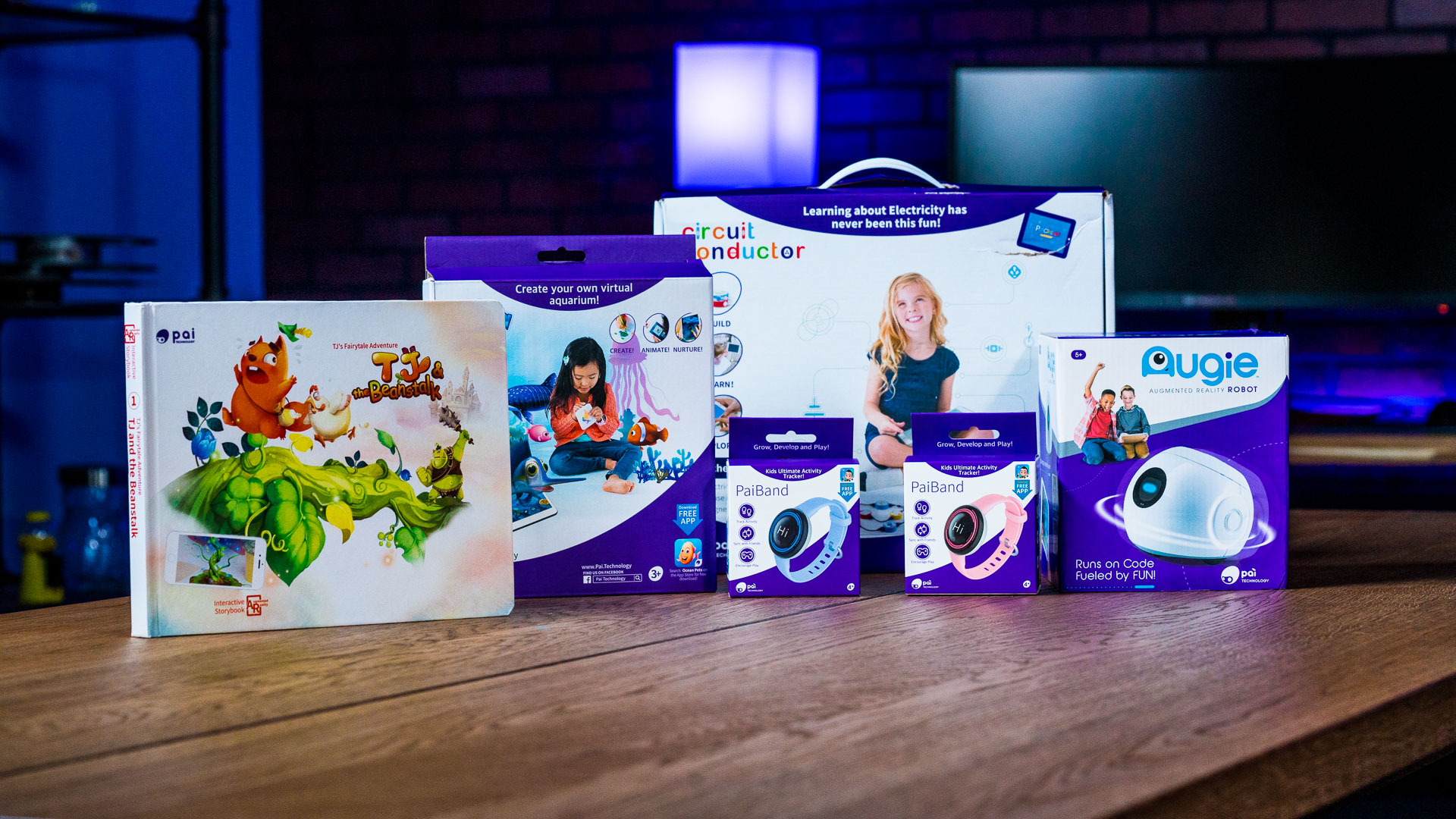
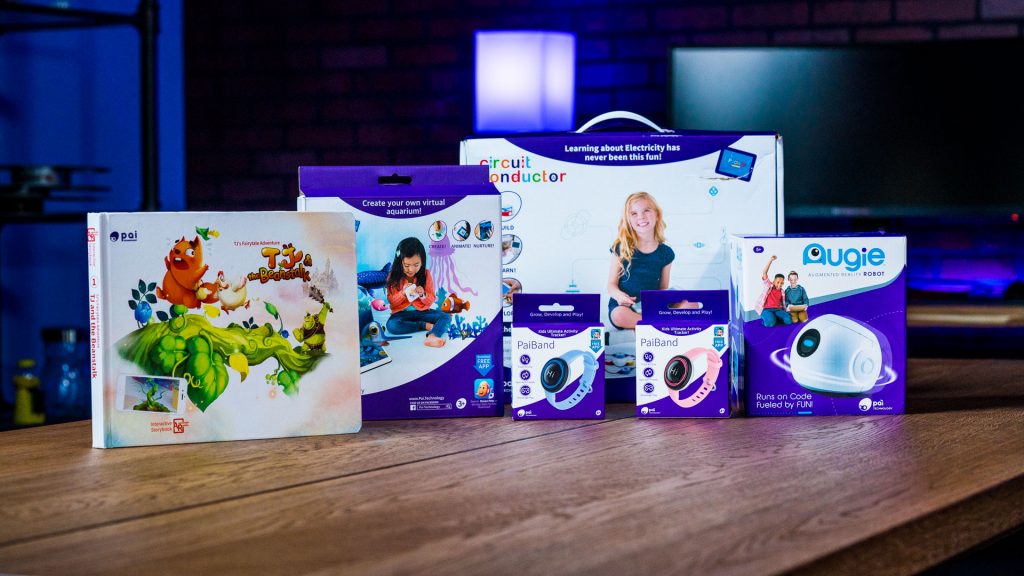
As parents, it may seem increasingly difficult to grab your children’s attention, let alone getting them to sit down to read or do their studies. The educational toy creators from Pai Technology look to change that. Using Augmented Reality (AR) or virtual controls in their apps, Pai Technology’s toys just might be the perfect blend of education and technology that both parents and kids are looking for.
Pai Technology is Chinese educational company based out of Santa Monica, California that focuses on the development of children between the ages of 3 – 12 years old. What’s great is that these STEM toys aren’t just for the family, but they are also designed to help educators and students Pre-K to 6th grade develop their awareness of technology, science, and art with products that strengthen critical thinking and problem solving skills.
For this article we went hands-on with Pai Technology’s entire product lineup. Similar to how school progression works, we’ll go through the different STEM toys starting with those designed for the youngest audiences, moving through to the more advanced toys. Pai has a handful of different products, each with a target age group as follows:
- Pai Interactive 3D Storybook: TJ & the Beanstalk (Recommended ages: 4+ months old)
- PaiBand Kids Activity Tracker (Recommended ages: 4+ years old)
- Ocean Pets – Putty Craft Kit with Augmented Reality Aquarium (Recommended ages: 4+ years old)
- Circuit Conductor – Electricity Learning Kit (Recommended ages: 4+ years old)
- Cube-Tastic! 3×3 Puzzle Cube (Recommended ages: 5+ years old)
- Augie – Coding Robot with Augmented Reality Gameplay (Recommended ages: 6+ years old)
Pai Interactive 3D Storybook: TJ & the Beanstalk
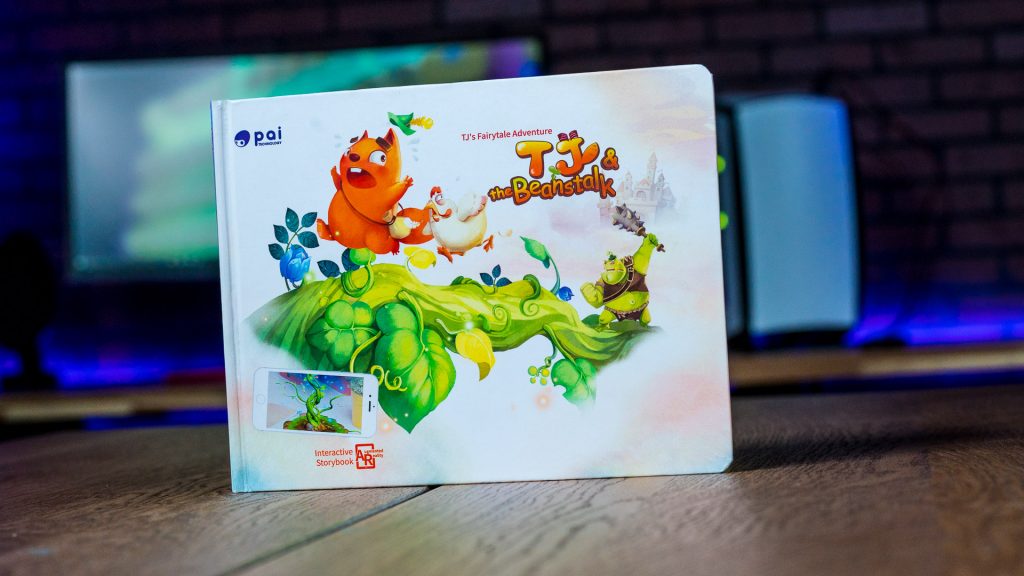
The first on the list is the Interactive Storybook TJ & the Beanstalk, which is Pai’s augmented take on the timeless story of Jack and the Beanstalk. We find our fox hero, TJ, helping other animals as they deal with an unfriendly green giant at the top of the beanstalk.
Throughout this fun and artful 20 page storybook (which sells for $14.99), certain page corners have an orange Augmented Reality, “AR,” symbol that lets parents and children know that there’s more to discover using the Pai Storybooks app. With the Pai Storybook app on Android or iOS devices, kids can watch the beanstalk magically grow, or find TJ in the green giant’s home nestled right on top of the dinner table.
When scanning one of the AR pages into the app, I thought it was actually fun, even for me as an adult, to see the classic fairy tale in a new light via my smart phone screen. The pages scanned effortlessly and the AR added a whole new layer to storytelling. One of the best AR moments was when TJ first got into the giant’s castle. When I scanned the page into the app, TJ and his chicken friend came to life right on my desk. By holding up the phone and shifting it around I could see both the physical items on my desk, but also see the animated characters in the same view on the screen. The picture quality was very good, with the brilliant colors and comical movement of characters popping out from the other items on my desk.
They were in one of the giant’s many rooms looking for someone while a fire roared behind them and a vat of soup cooked in the corner. Characters and some objects can be poked leading to some funny animations or more information like what was actually cooking in the cauldron. The depth added with AR helps with the imagination and it turns the story more into an interactive cartoon show where kids play a big part. In all honesty, the most common response around the office would be for people to do a double-take after seeing the AR, to be sure it wasn’t happening in real life. For some parents, they might love the AR storybooks just as much as the kids!
PaiBand Kids Activity Tracker
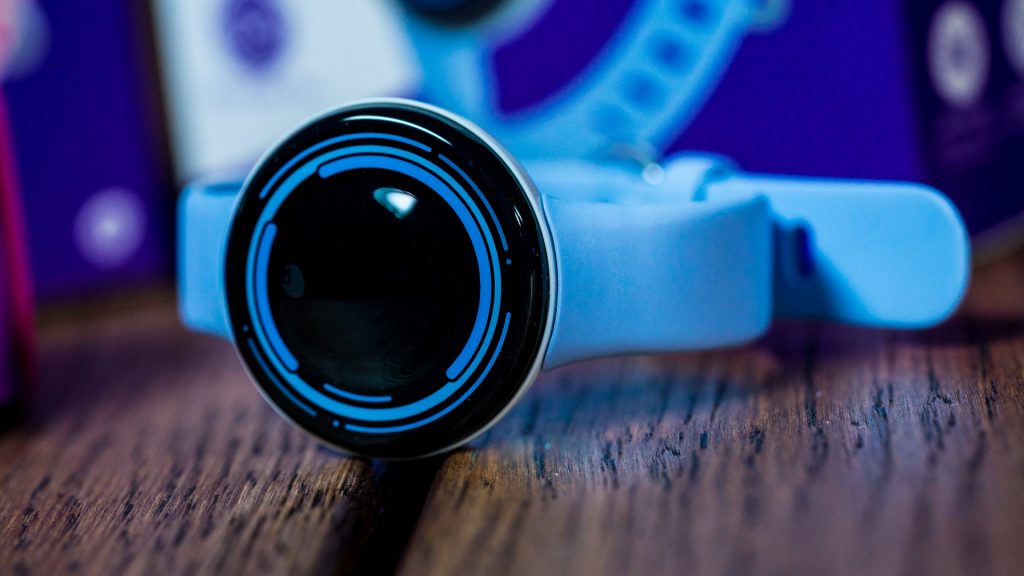
With all the smartwatches and activity trackers on the market, it’s apparent that more people want to learn about their heart rates, sleeping patterns, and running pace, but what about activity trackers for kids?
This is where the PaiBand Kids Activity Tracker ($69.99) comes in. It helps children and parents track steps, monitor sleep patterns, and set reminders to help organize activities like chores or sports. It also records heart rates and distance monitors can be setup to ensure that children don’t stray too far when playing outside. Two PaiBands can also be synced together so friends can add each other and challenge each other’s stats, as well as play an interactive game called PaiBand Move: City Run, encouraging kids to get moving.
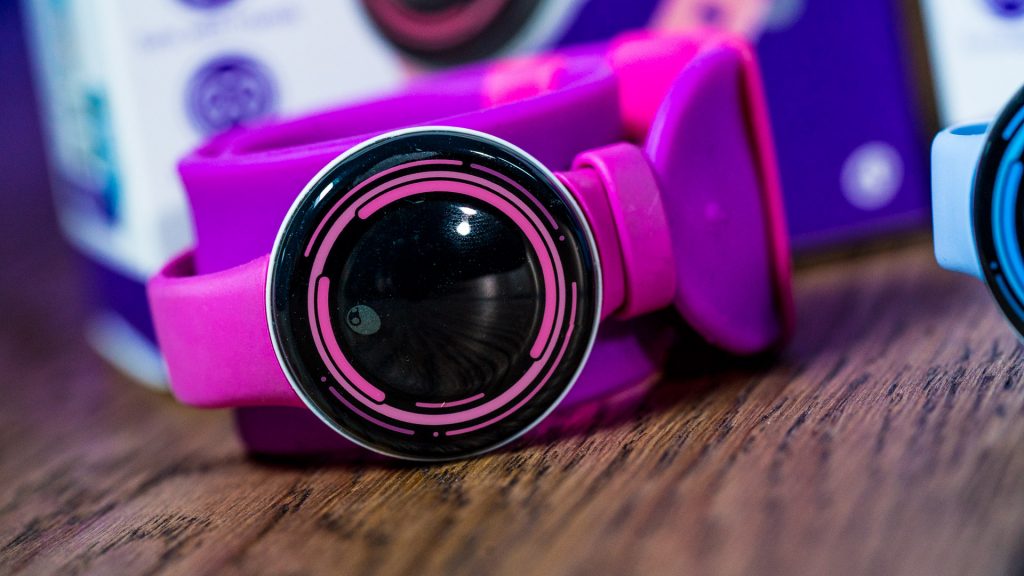
I used the PaiBand for a few days and compared the stats to my Garmin Vivosmart HR+. On the same day, the PaiBand recorded about 1,500 steps while my Garmin tracked 6,000 steps. This could be due the difference in sensors between the two activity trackers and the PaiBand could be set to record differently for kids compared to adults or, like many other activity trackers, it might just take some time to collect data and tune its sensors to a specific individual.
The Sleep Monitor works by tracking heart rate changes during sleep and determines the minutes in deep sleep or restless. The sleep statistics are shown on the home screen in the app as minutes awake vs restless sleep but reading the stats on a weekly or monthly basis weren’t as consistent as the Steps tracking. Some days at the start of using the PaiBand, it recorded only 60 minutes of sleep while other days looked more normal around 400-550 minutes of sleep, which is about 6 to 9 hours and that leads me to my next point. Similar to the step tracking, it seems like the PaiBand takes a few days or weeks to gather consistent data and tune sleep tracking based on the movement recorded. And although stats may differ greatly between activity trackers, if they’re used consistently then the data recorded can still provide useful information on how to optimize activity and sleep.
Ocean Pets – Putty Craft Kit
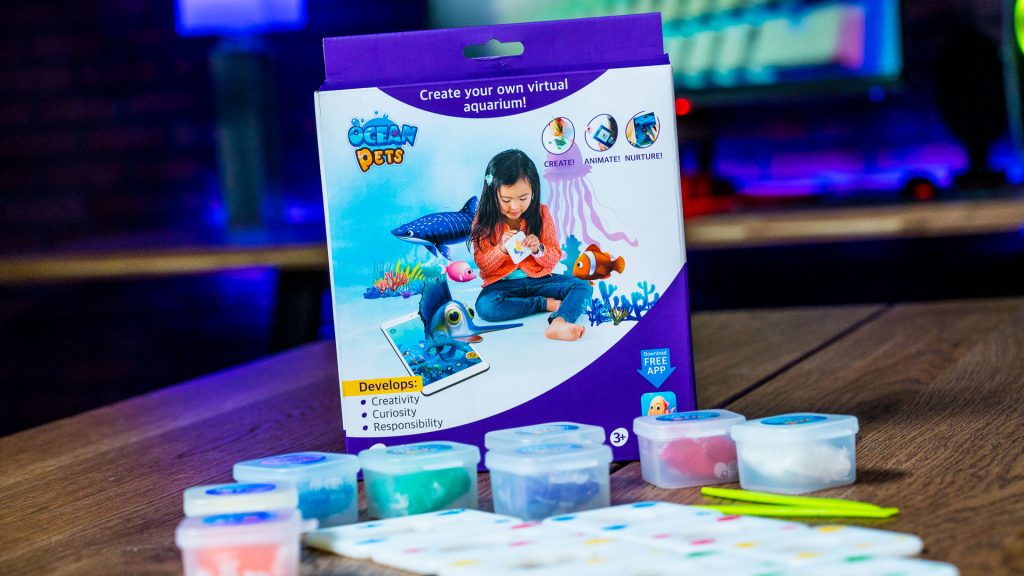
What’s better than owning your very own aquarium? How about having your own Augmented Reality aquarium that you can take anywhere! Pai Technology continues their laser focus on developing interactive toys with Ocean Pets ($29.99), a toy designed to help spur kids’ creativity making sea animals that come to life in the Pai Ocean Pets app (with more animals becoming available through future updates).
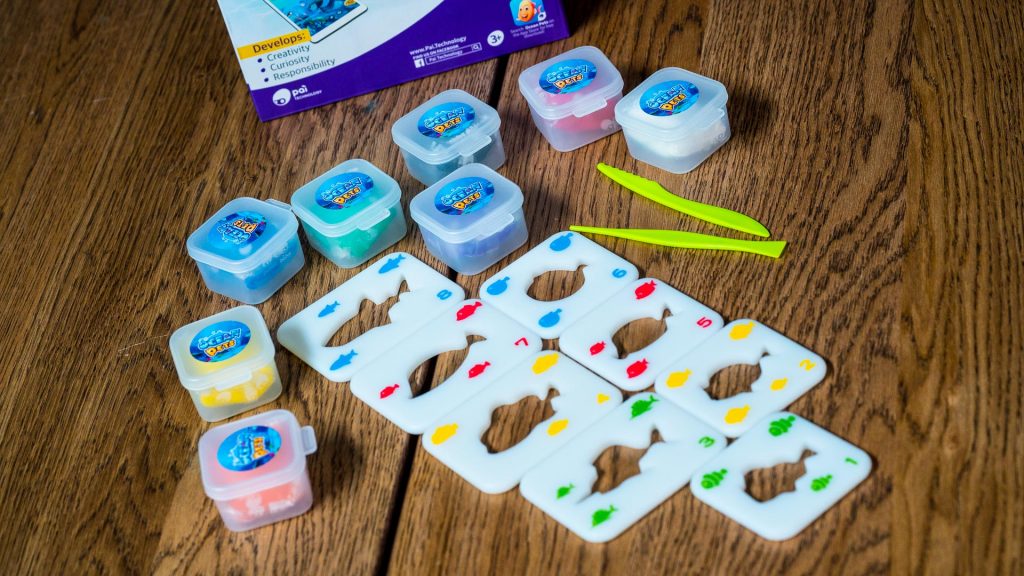
Instructions are easy to follow, as kids push colored putty into molds using different colors for red fins, yellow stripes, or blue bodies – whatever you kid wants! Once the creation is complete, kids scan their new creations and in moments they meet a digital version where they can watch them swim, play games, or demand virtual food and baths in the app. For some parents, Ocean Pets will seem like an updated version of the Tamagotchi digital pets that took the late-90s by storm. The fish putties themselves can also be used in real life by leaving them out to dry in open air to create lasting gifts like pencil holders or sculptures.
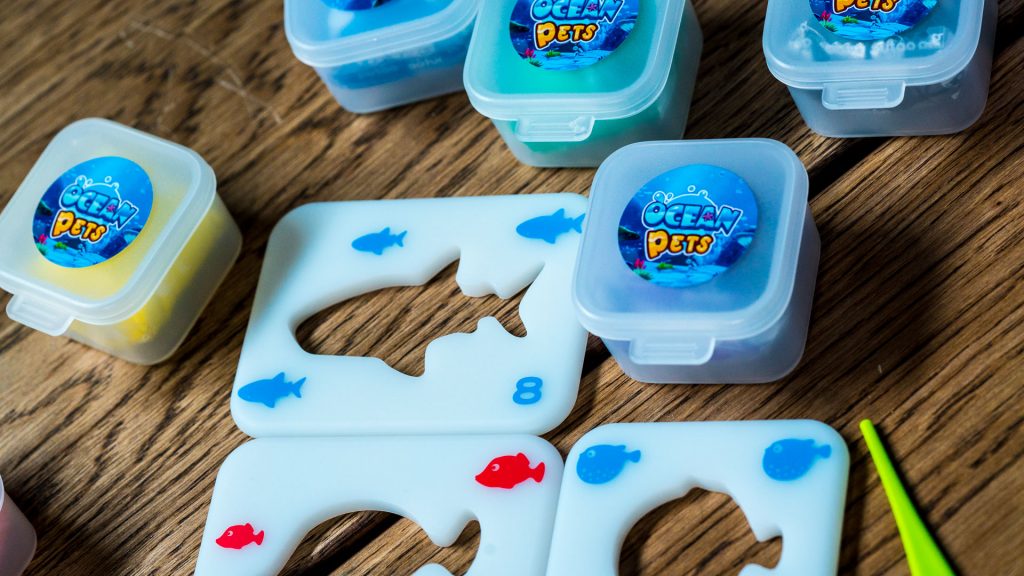
This is great for kids as young as 3, even though they may need more help on the app than the putty molding from parents. Ocean Pets promotes the science of biology as well as artistic creativity, bridging the gap between device and hands-on playing. Not only do the creatures say silly things a 5 year old would love through chat bubbles, but they alsooffer science facts about the ocean to help kids continue learning the more they create and add new fish. Kids can also record their own voices for the fish, which adds another level of interactivity and fun.
Circuit Conductor – Electricity Learning Kit
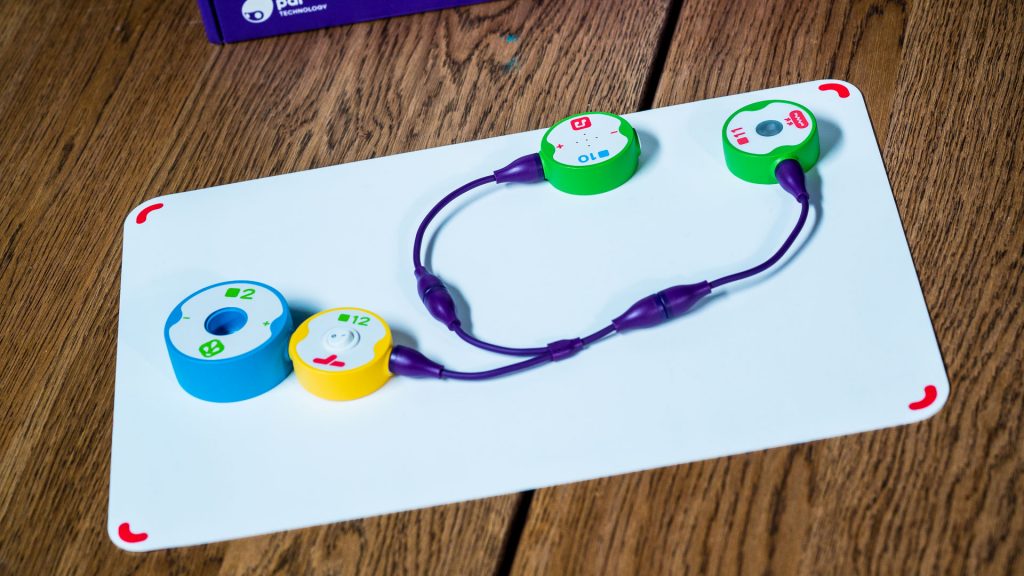
When showing kids how electricity works, it’s a little more fun to see the connections being made from battery to lightbulb than it is to simply add batteries to a flashlight. Pai’s Circuit Conductor ($69.99) teaches kids about how electricity moves in a system using magnets that hold all the pieces together. There are 12 different modules in the kit that light up, spin, or make noises to make learning about electricity fun and engaging.
The Circuit Conductor Kit comes with six insulated magnetic wires to help kids learn about the different ways electricity affects certain modules. Partnered with the free Circuit Conductor app, parents and children can follow simple instructions on how to power each module and see what they do. The app takes families on a series of tutorials for each module which must be scanned into the app before moving on to the next tutorial in the lesson, showing how the electricity travels between the different modules.
Parents may have to help for this part as finding the best angle to scan the placemat and modules did not register in the app so I was stuck on the 2nd tutorial and could not play any of the in app games. This was a let down, since the only way to proceed through the tutorials was to follow the instructions for each module. Instead, I tested the modules without scanning them as parents and some children can figure out what they do from simple trial and error. In either case, connecting the battery module to a power button and then to a light module was fun, and even a child could see how turning off a light switch in a house is based off the same concept.
The kit is designed for kids ages 4 and up, but I don’t see much value for children 10 and above since the modules and wires look and feel like they’re designed for a younger audience. Hands-on learners will have a blast connecting modules and seeing if their creation turns on all the modules or only part way since there may not be enough power flowing through.
Cube-Tastic! – 3×3 Puzzle Cube
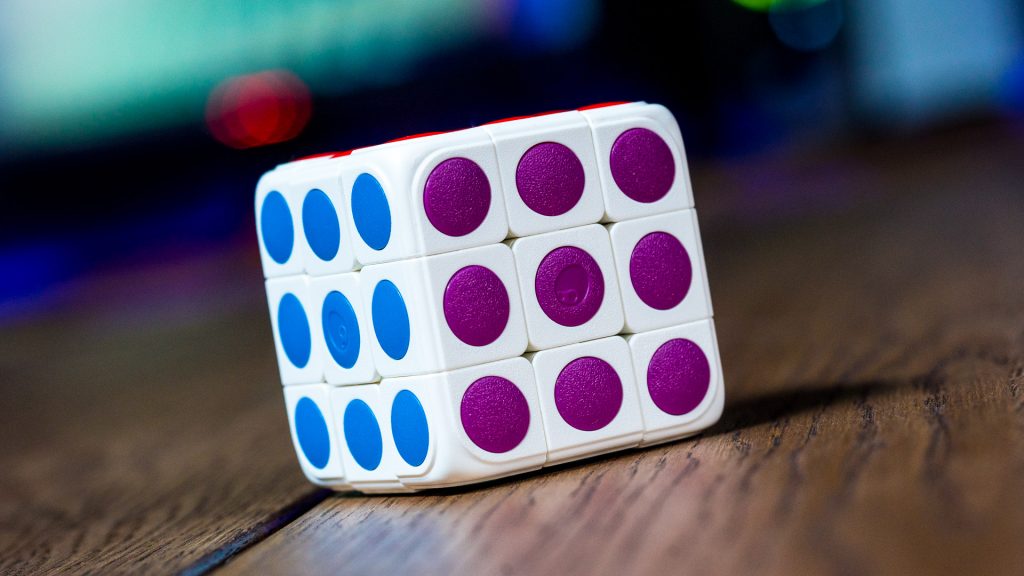
Solving a Rubik’s Cube has never been easy (and peeling off the stickers or painting each side the same color doesn’t count). So if solving a Rubik’s Cube is so difficult, how can the Cube-Tastic! Puzzle ($19.99) be solved by 5 – 12 year olds?
Well, the Cube-Tastic! app uses Augmented Reality to provide users step-by-step instructions to complete the puzzle. Scramble the entire cube and the app will ask to take photos of the different center squares to map all the panel colors. Once that’s completed, you’ll have to confirm that both the AR cube in your device and the real one in your hand match. When the two cubes match up, then it’s simply up to the user to follow the instructions to solve the puzzle.
I’ve never completed a Rubik’s Cube, with or without help, but thanks to the AR I solved my first cube in less than 90 seconds. I was astonished by how well the AR worked and how simple it was to follow the instructions. I scrambled the Cube-Tastic! 3 more times and the AR instructions worked every time.
For a child’s version of a Rubik’s Cube, the Cube-Tastic! works surprisingly well. Moving any part of the cube feels silky smooth and the Cube-Tastic can survive accidental drops without exploding into 54 pieces. With enough practice and repetition, children can learn how to solve the cube by themselves which would be a great accomplishment.
Augie – Coding Robot with Augmented Reality
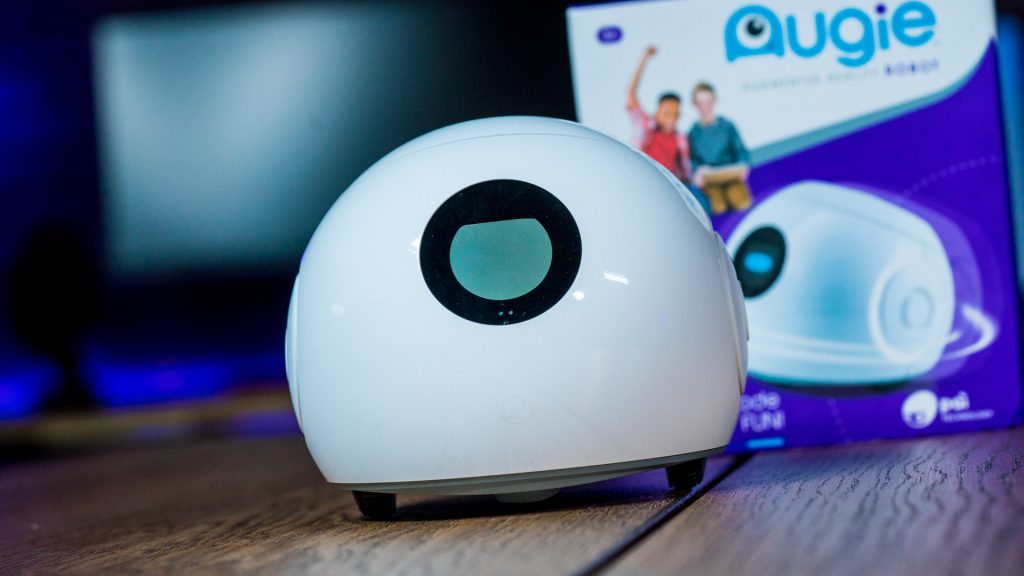
The Augie Coding Robot ($199.99) is the most advanced toy of Pai’s STEM catalog, and it shows with what this robot can do. It’s developed to introduce kids to coding and mixes imagination with technology in fun R2D2-like ways whether learning takes place at home or in the classroom through engaging Augmented Reality games or interactive coding lessons with the app.
With its expressive visual and auditory features, Augie is designed for children as young as Pre-Kindergarten and up to 6th grade. There are lessons that help kids and students learn how to code by showing them the programming task and then guides them through setting up the programming, which can also include AR activities to help children visualize what the programming is supposed to do through interactive games. Augie also allows kids to record their own videos and sounds, and by learning how to code they can play these custom sounds when Augie detects a wall, or a video when Augie moves a certain distance.
I was taken aback by how many lessons are in one category of programming. Augie’s Movement lesson, for instance, has 27 individual programming tasks ranging from moving Augie left or right to making the robot move faster to programming the sounds it makes when detecting an obstacle in its path. The tasks become increasingly complex as more advanced tasks build upon programming sequences from past tasks. And although the lessons can be used at home, they could feel constrictive because the only way to move on to the next programming task to complete the previous task, so kids who prefer jumping around lessons and tasks will have to go through the entire process. Educators can even create their own lessons plans using Workbench, which comes with the Augie, to develop lesson plans and then share them with a community of other STEM educators.
As I went through the different modes like Freeplay, that allows kids to use Augie with preprogrammed actions, or AR Coding, where kids can learn how to code for augmented reality, there’s plenty of modes to keep kids occupied whether it’s for fun, learning, or both. The platform that helps in all this is the kid-friendly Scratch coding language used in the Blockly visual editor, which is used by other STEM toy companies so the Augie could provide a solid foundation for kids interested in coding and engineering.
Augmented reality toys & STEM
From simple interactive books to activity trackers to coding helper robots, Pai Technology wants to help parents and children learn about science through hands-on play and augmented reality. These are the STEM toys from the company and it’s apparent that they stick true to the goal of developing inventive toys that mix science with fun, something most toys haven’t been able to do until the creation of new interactive technology.
In all these toys were fun to play with even as an adult, and they did a good job balancing education and entertainment. Although some of the toys may need more help from parents, kids are quick learners especially when it comes to technology so it’s possible for them to learn themselves once they’re shown the steps a consistently enough. The Cube-Tastic is a perfect example of this, and kids will be solving Rubik’s Cubes like geniuses in no time.
Featured in this article:
Pai Interactive 3D Storybook: TJ & the Beanstalk– $14.99
PaiBand Kids Activity Tracker– $69.99
Ocean Pets – Putty Craft Kit– $29.99
Circuit Conductor – Electricity Learning Kit– $69.99
Cube-Tastic! – 3×3 Puzzle Cube– $19.99
